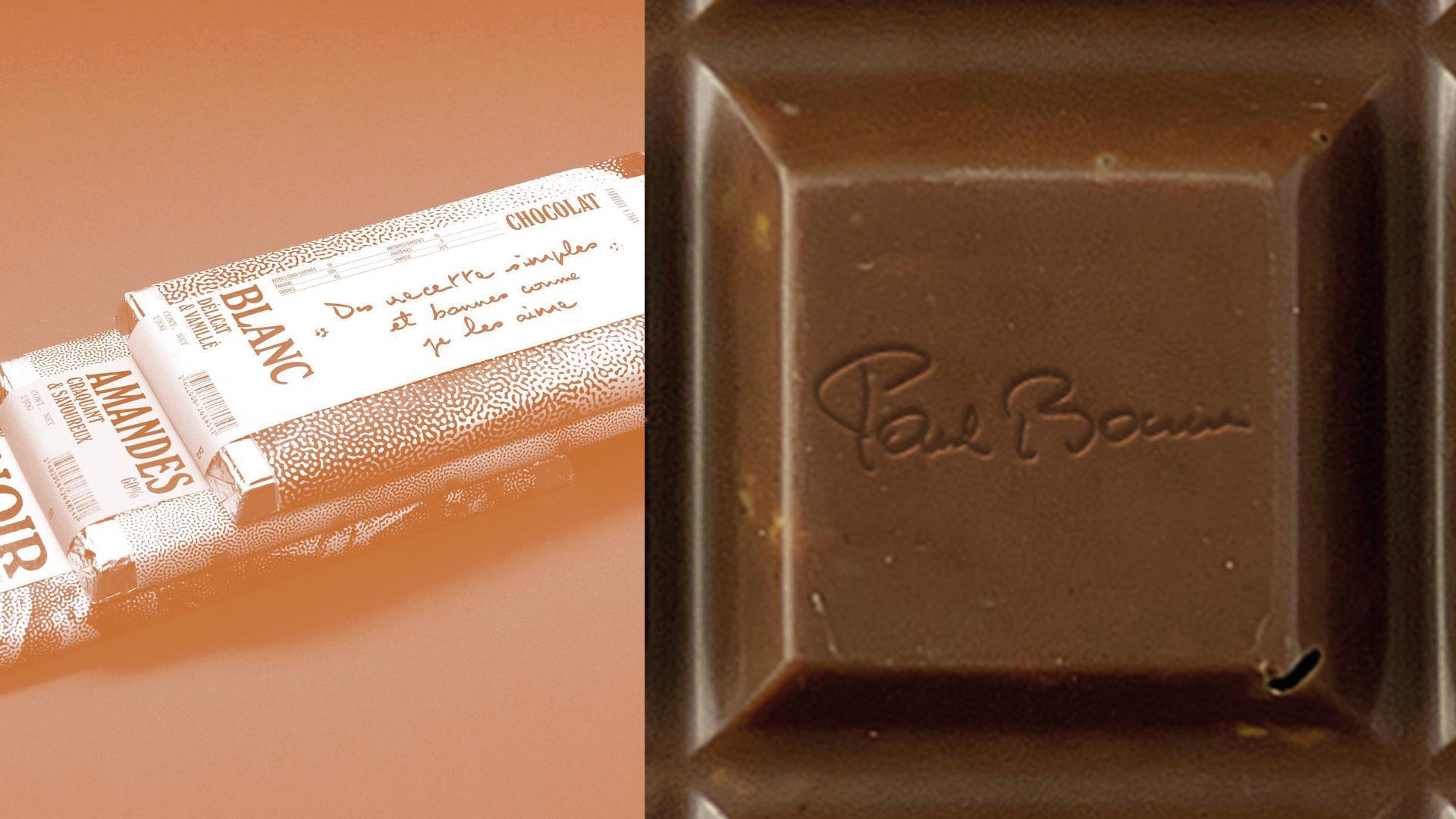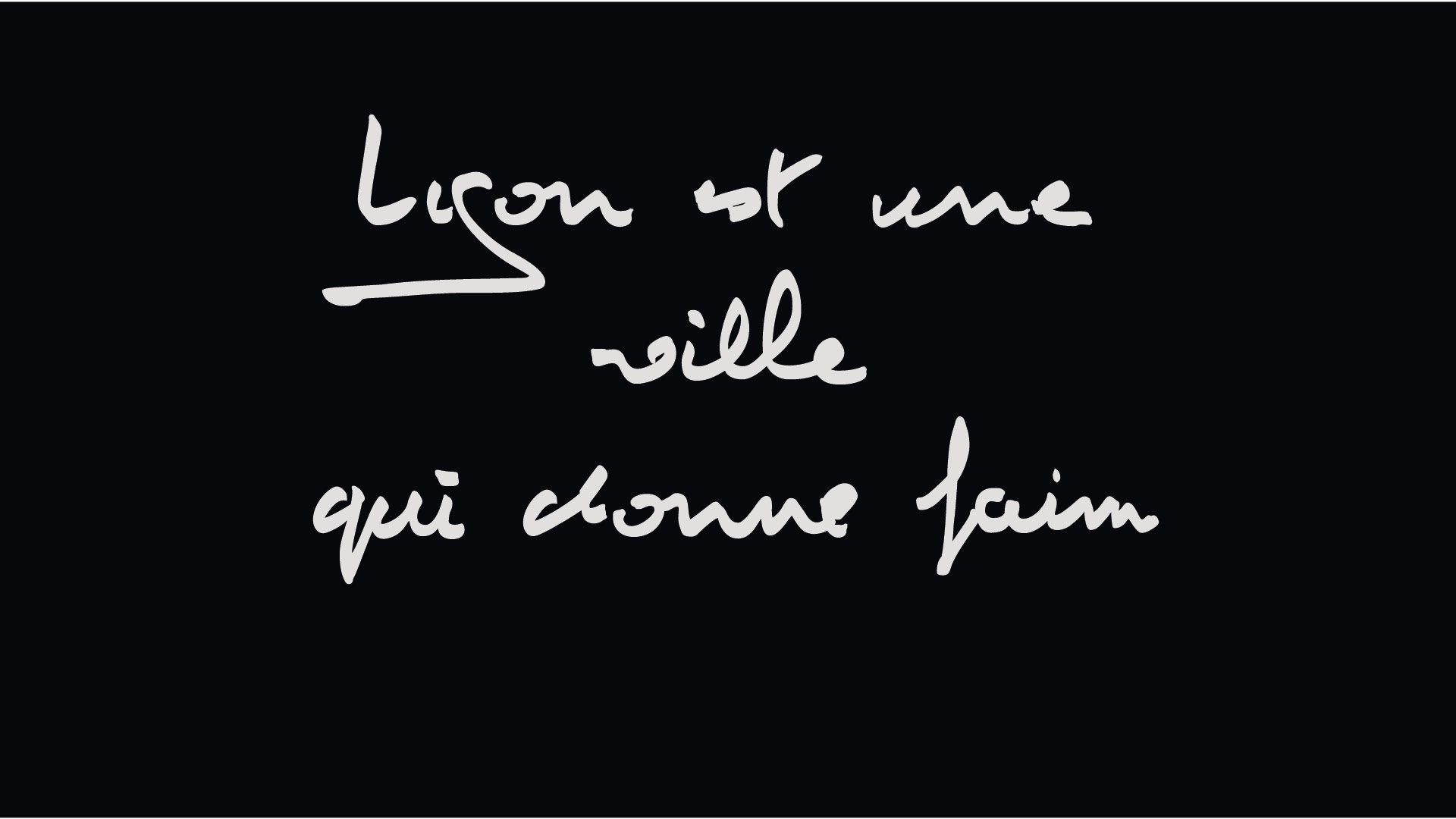
By Sebastien Hayez. Published October 12, 2023
Bocuse Font Family
Raison d'être
When Massimo Vignelli (1931-2014) spoke of his typographic preferences, his tastes revolved exclusively around the essentials:
"I still believe that most typefaces are designed for commercial reasons, just to make money or for identity purposes. In reality, the number of good typefaces is rather limited and most of the new ones are elaborations on pre-existing faces. Personally, I can get along well with a half a dozen, to which I can add another half a dozen, but probably no more. Besides those already mentioned, I can add Optima, Futura, Univers (the most advanced design of the century since it comes in 59 variations of the same face), Caslon, Baskerville, and a few other modern cuts. As you can see, my list is pretty basic, but the great advantage is that it can assure better results."
This radical preference for the great classics may seem a reasonable and balanced stance. But the parallel with other choices quickly shows the limits of this dogma. It can be argued that every person has his or her own voice: some will be accomplished singers, capable of changing musical registers, others will be perfect radio voices, and finally, some will only have the merit of having their own voice. No one would ever ask someone to change their voice because it's disruptive or unattractive.
A person's handwriting is like their voice: a natural imprint that embraces their identity without distinction. To write is to involve one's body in an individual textual message. So translating a person's autograph handwriting into type design is a skill that is rarely properly considered. It would be wrong to think that the task is not a matter of design, that creativity is absent from the process, or even that usage is often limited to the illusion of handmade.
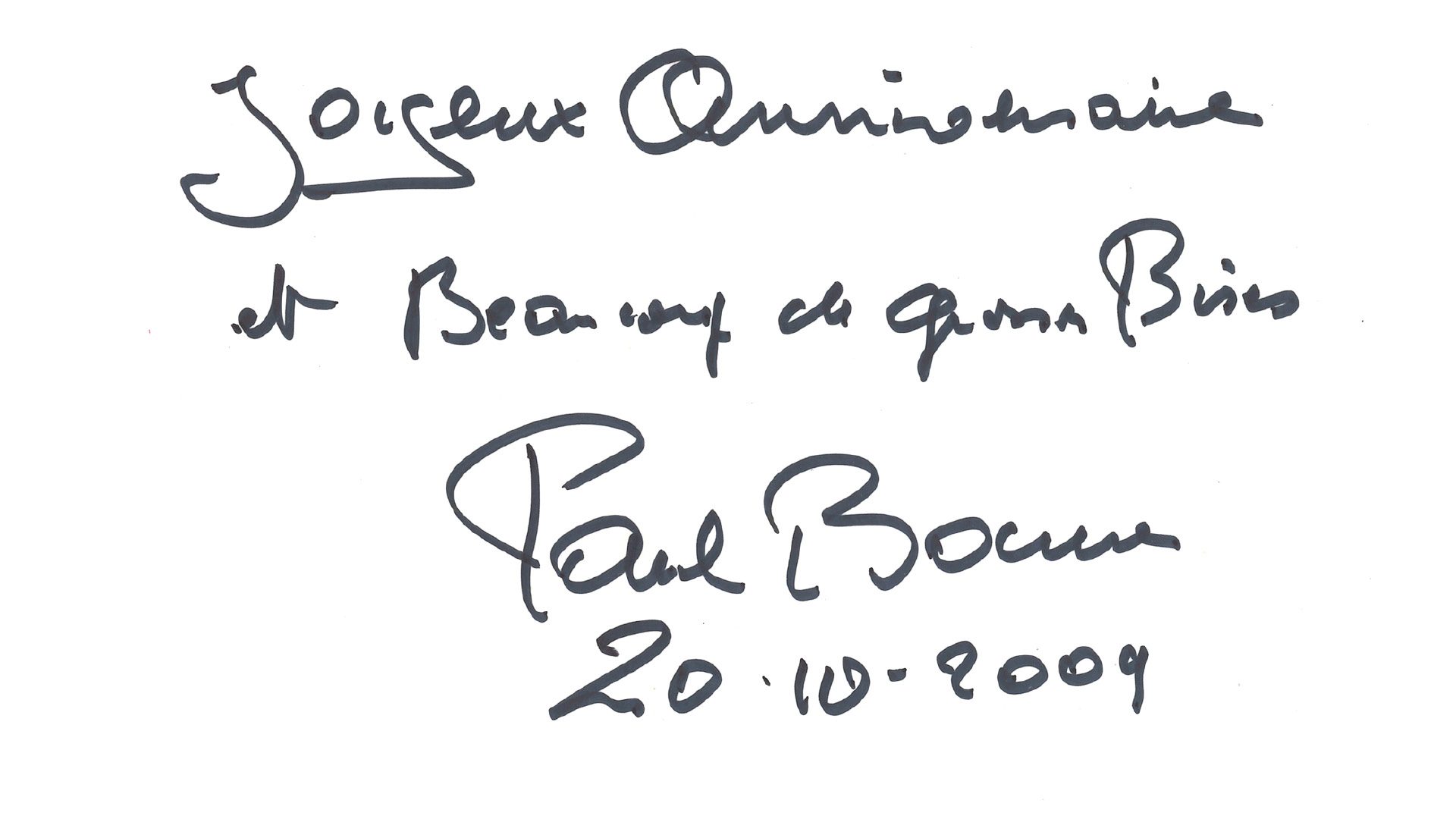
BlazeType was approached in the spring of 2021 by the communications department of Paul Bocuse, the restaurateur who has become an emblem of gastronomy around the world.
For several decades, his silhouette, his voice and his signature were featured in all the media. After Paul Bocuse's death, his restaurant, his brasseries and his products live on, making his name eternal. It's only natural, then, that we should also extend his handwriting through a typography that can be applied, as was already the case, to all his graphic communications.
Imitation or resurrection?
As soon as typography was invented, Gutenberg imagined movable typefaces imitating the blackletter script in vogue at the time. The manual illumination of the Bible's 42-line lettering is a good example of this imitative approach. However, the case of contemporary manual typefaces is based on the specificities of a script far removed from the standards of calligraphy.
Given these particular aesthetic constraints, the designer's work should be seen as that of a painting restorer, removing yellowed varnish, filling in gaps and occasionally carrying out interpretative work.
Blaze Type had access to some of Paul Bocuse's handwritten archives in order to digitize and select models for each glyph. 420 images were cut to cover the capitals, lowercase letters and numbers required for a basic glyphset. Some glyphs, such as K, k, j, Q, q, V, X, Y, Z, z, and 8, are still missing from this abundant and sparse documentation.
Among all the sources, some are interesting in terms of layout, but disappointing in terms of aesthetics. For example, an S in ballpoint pen shows an interesting calligraphic dynamic, but the beveled felt tip apparent in other specimens proves more assertive. Blaze Type therefore had to consider the sources according to several complementary factors.

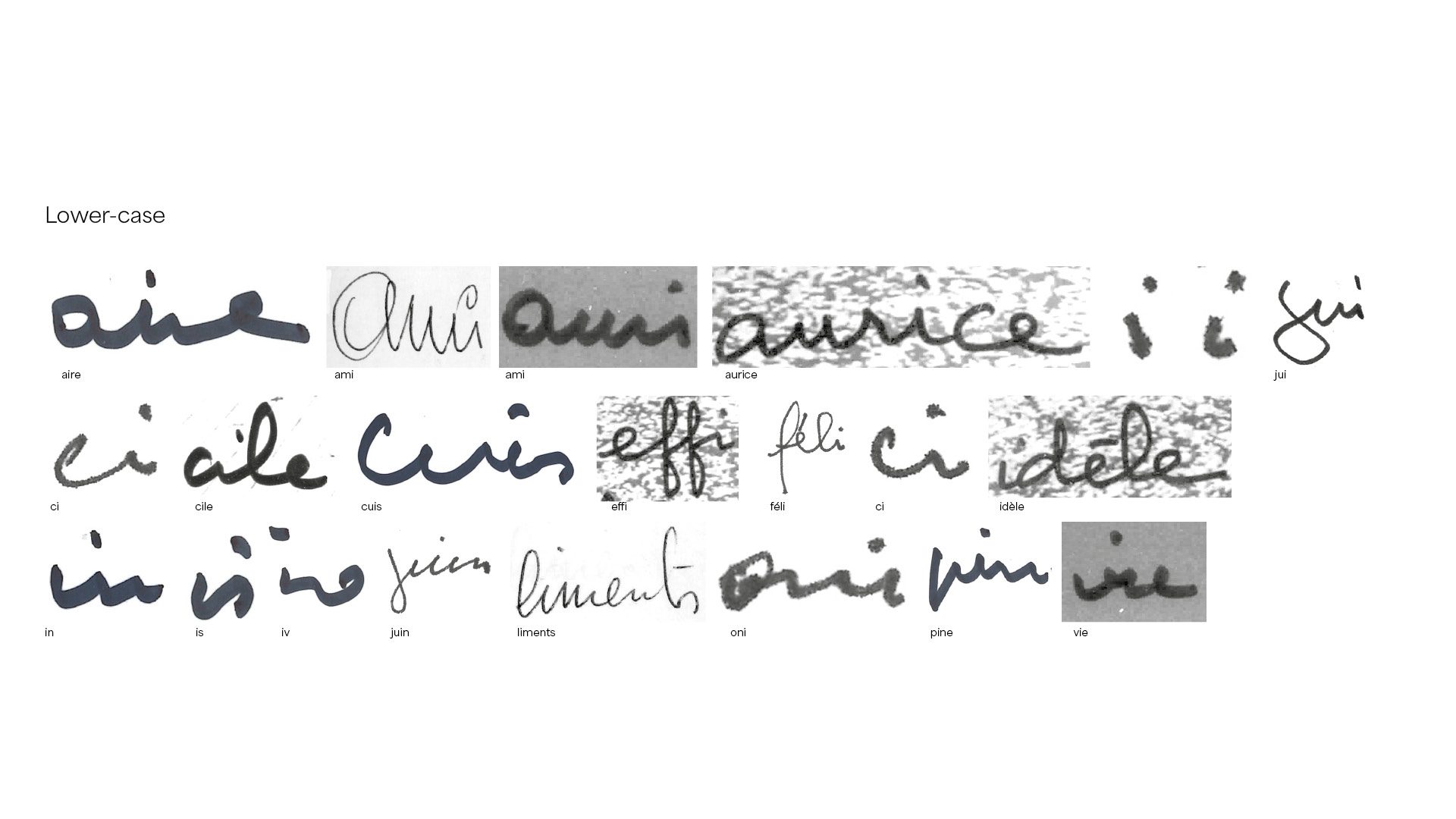
Draft
The first step in production will be to select the models for each lowercase glyph and vectorize them accurately. The first tests are designed to check whether the resulting rhythm is close to the handwriting.
In a second step, the uppercase are added, before further tests are carried out, although the missing letters are still omitted. These initial results show X heights that are too changeable, clogged counterforms and an unstable baseline. It's now clear that the whole thing needs to be toned down to optimize overall legibility.
Several questions arise very quickly during this first stage: should we smooth out the typedesign to obtain a set of glyphs simulating cursive ligatures, or should we keep the more jerky aspect of the chef's handwriting and make a few adjustments later?
The first option would orient the type design along the functionalist lines of Mistral (1953) by Roger Excoffon (1910-1983): the slurs are incorporated within each typeface, making the whole homogeneous, but the baseline can be variable to simulate the irregularity of hand-drawing.
The second approach is more aesthetic, involving the creation of a set of contextual ligatures to break the monotony of independent characters. Because its use is limited to very short texts, it's this second, more labor-intensive option that is preferred to revive Monsieur Paul's handwriting.
Polishing
Resuming work requires polishing the lowercase and then the uppercase. These glyphs have a legible morphology, with occasional slur lines, missing letters and a unique character set. Once the set is stable, tests quickly show that certain recurring digrams in French (le, la, de, ts, as, es, etc.) require the design of ligatures. This task is also an opportunity to propose alternative shapes for the letters: the open e is replaced in the ligatures by a plugged or slightly inclined e; the loops of the b or l can also vary in height, for example.
When digrams work, the development of ligatures extends to trigrams and even complete words. In this way, writing Paul Bocuse without resorting to ligatures will have nothing to do with the chef's handwriting. Writing PaulBocuse without spaces means incorporating the brand's logo into the text for greater consistency and graphic efficiency.
However, while at this stage the typography works well by incorporating alternative shapes, the missing glyphs are not yet drawn.
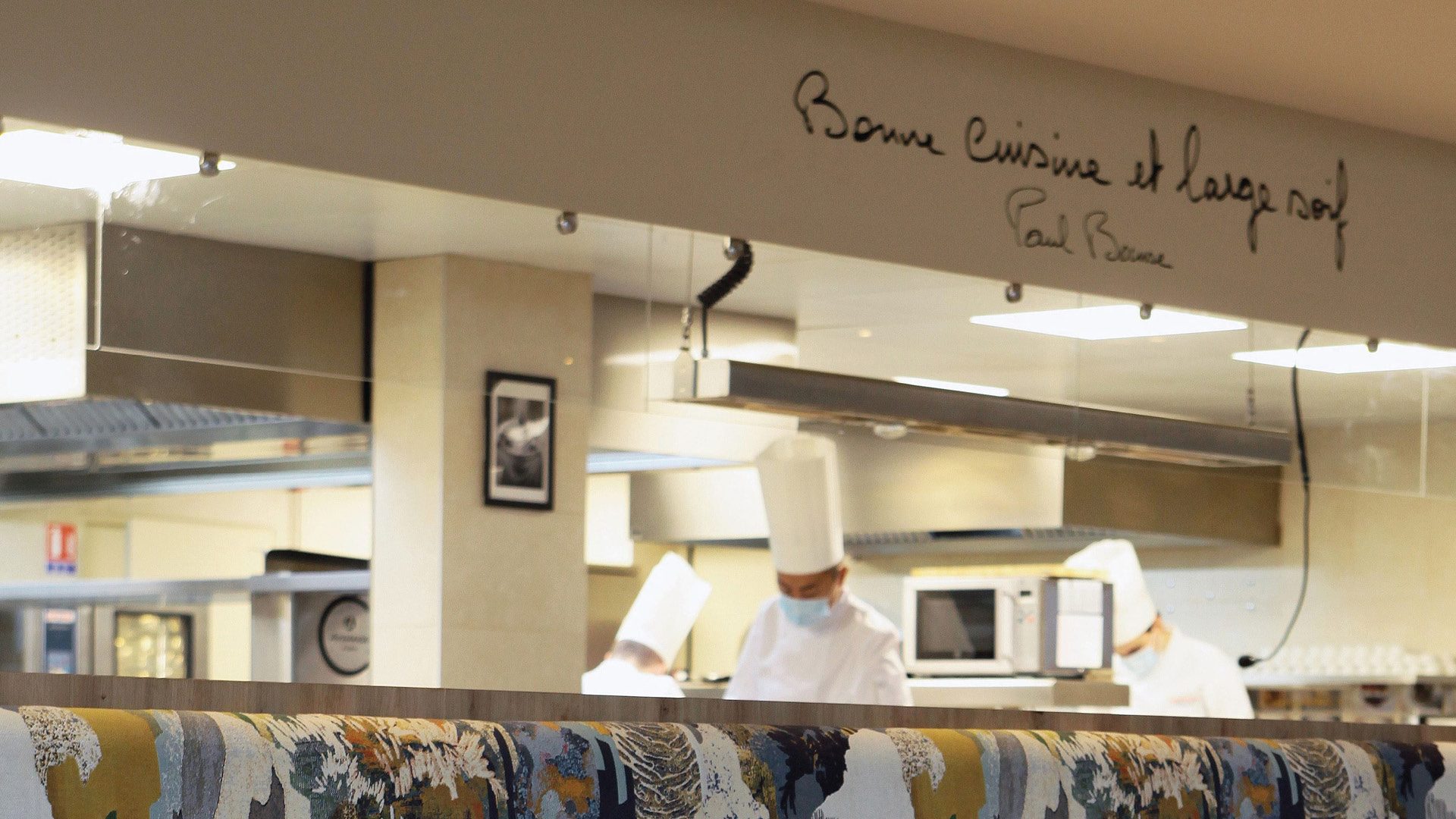
Development
Once the production process has been tested and confirmed, the next step is to multiply the ligatures for more specific cases. Ce, celle, celui, cent, chaque, comme, commen, comment, cui, cuisine are just some of the contextual ligatures programmed to cover frequent occurrences, to offer a pleasant optical gray and thus a good reading of the content. A total of 192 ligatures have been developed, two of which are capitalized (TT and TE) for smooth break changes.

Glyphs absent from the handwritten sources are drawn in marker and digitized, guaranteeing respect for the original spirit.
Finally, the development of diacritics has received particular attention: some accents are similar from one glyph to another, but on closer inspection, the accent of à is not that of è; the general form of ë is not the same as its cousins é, è or ê.
Even if the text exploiting the font will rarely be long, a generic punctuation is also designed to compensate for certain uses.
In the end, a beta version was entrusted to a number of the brand's communications studios for realistic simulations and critical feedback.


Paul Bocuse's handwriting will never be calligraphic, no matter how hard he works on his strokes and the rhythm of his ligatures, or how much he bevels the tip of his marker. However, this typography must remain in its place: a craftsman's job, where the designer's know-how is to design a tool that is easy to use and capable of bringing life back to the hands of those who are no longer here. In the work of a manual revival, the designer's modesty makes it possible to achieve a project where the transparency of the result goes beyond questions of style, far from the polemics of Massimo Vignelli. Everyone is entitled to their own style.


